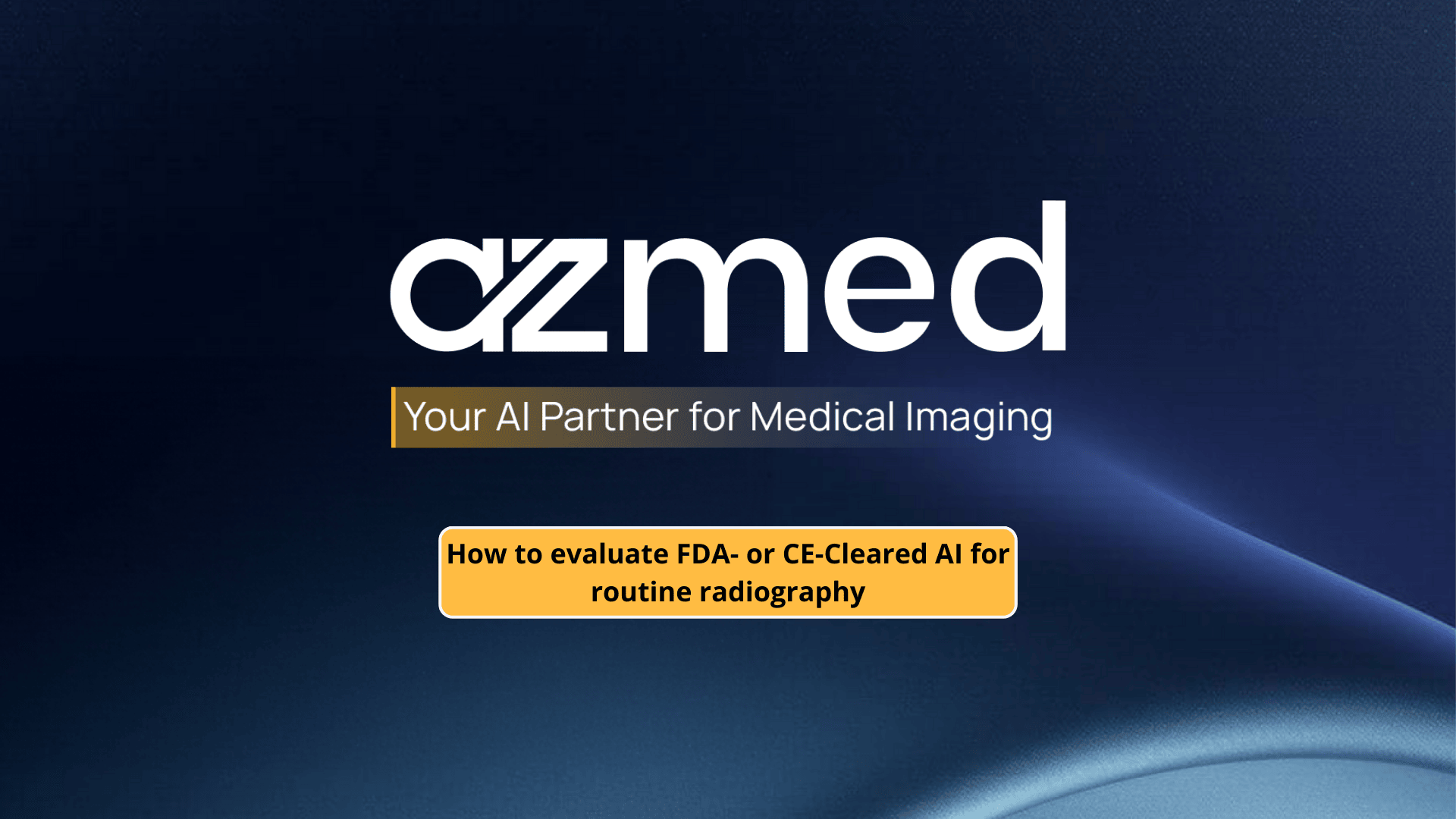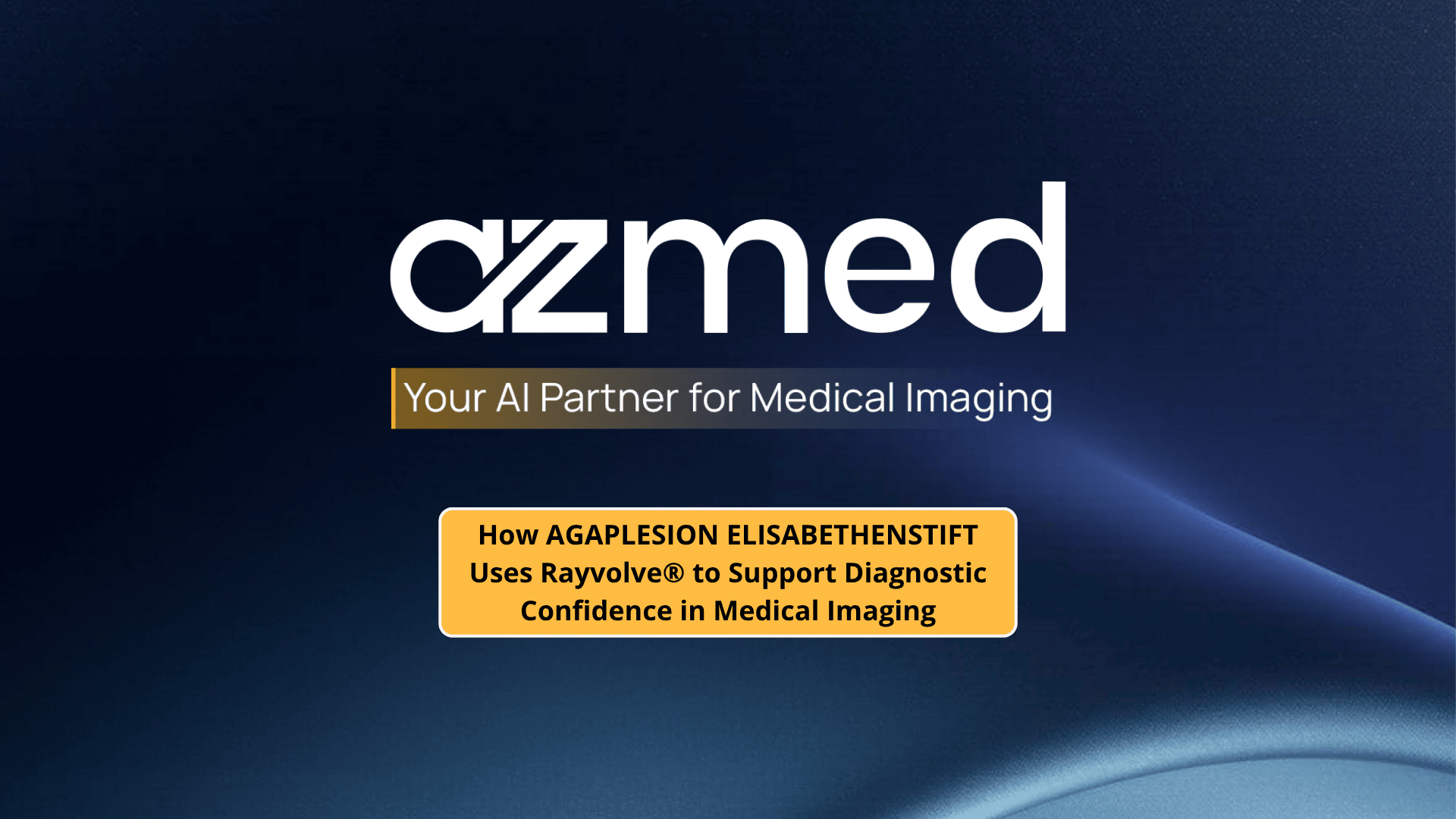Radiology departments are experiencing increased levels of occupational strain as radiologists read more exams. Higher volumes of cases exist while staffing fails to keep pace, creating a culture of professional stressors and cognitive fatigue among radiologists.
It has been well documented that burnout in radiology is on the rise across the globe, with reported estimates up to 88% for burnout overall and 62% for high/severe burnout.
And this is not just about the well-being of the radiologist.
When radiologists burn out, patients feel the impact. Reports slow down, accuracy drops, and small but important findings, like something on a chest x-ray analysis, can get overlooked. Hospitals then face higher costs, greater legal risks, and have a harder time keeping their staff.
This raises an important question: can AI radiology help reduce burnout while still supporting the high diagnostic standards for patients and hospitals?
Understanding radiologist burnout in 2025
Burnout in radiology is a well-documented syndrome of emotional exhaustion, depersonalization, and diminished professional efficacy. Although the sources of stressors may differ, they all relate to increased workload. During any given shift, many radiologists may interpret several hundred examinations, which, depending on the number of images per study, could amount to thousands of images. Night shifts and on-call duties only compound this experience. Hospitals now demand time-sensitive reporting, with expectations for prompt turnaround and clinical disposition, as part of the workload.
Recently published data show just how pervasive and costly burnout in radiology has become. For example, the academic review published in 2023 in Academic Radiology indicated that burnout is a consequence of clinical practice in diagnostic imaging, which can lead to job dissatisfaction, increased risk of diagnostic error, and increased intent to leave clinical practice. The authors concluded that long case lists, lack of recovery time within and between shifts, and pressures to maintain diagnostic precision are real hazards to the health of the profession.
AI can help reduce these stressors in most cases when clinically validated and designed for seamless workflow integration. AI can analyze studies, automate repetitive tasks, and help mitigate cognitive and diagnostic fatigue associated with prolonged case interpretation.
Artificial intelligence and radiologist burnout: 5 ways AI helps
Radiologist burnout is among the most significant challenges in contemporary imaging. Artificial intelligence is developing and enhancing as a practical solution, not in place of talent itself but to assist and support it. Here are five tangible ways AI is supporting radiologists to manage their work-life balance while decreasing exhaustion.
Way 1: Easing cognitive load
Performing routine measurements and calculations takes precious time and concentration, which weighs on cognitive loads and can lead to exhaustion. AI solutions are now automating these monotonous tasks and allow radiologists to keep their focus on clinical interpretation.
Within the Rayvolve® AI Suite, AZmeasure automates the description of osteo-articular geometries while resulting in lengths and angular positions, all while taking seconds. AZboneage measures biological age in the pediatric population in seconds utilizing the validated Greulich & Pyle method, effectively removing one of the most common repetitive tasks in pediatric radiology.
What took dozens of clicks and manual data entry now takes a few seconds. Automating long routine, repetitive processes lowers cognitive load while allowing radiologists to focus on diagnostic interpretation. Results are a quantifiable reduction in workload while maintaining performance during demanding shifts.
Way 2: Triage and prioritization
A key source of burnout among radiologists is the increasing number of unread studies, with priority evaluations at risk of getting lost within orders of routine studies. Artificial intelligence can mitigate this increasing problem with intelligent triage and flagging cases that require immediate evaluation for specific conditions.
AZtrauma, a product from the Rayvolve® AI Suite, detects suspected fractures, dislocations, and joint effusions so that clinicians have priority evaluations at their fingertips. As another example, AZchest* alerts clinicians to and categorizes abnormalities of the chest fields that are critical. Reports are structured so this information fits seamlessly with their reporting workflow.
In the setting of clinical care, these AI modules serve as an intelligent triage and administrative support system. By batching priority studies at the top of the list, radiologists can tackle serious conditions without delays and the psychological burden of routine workloads is reduced. The ultimate goal is to protect time for both the radiologists' focus and quality care by improving efficiency, increasing the detection of missed urgent conditions, and improving the work experience for the radiologists.
Way 3: Supporting diagnostic accuracy
When we consider the risk of error for radiologists, the primary error comes from radiologists overlooking an important finding due to heavy workloads and demands. Artificial intelligence provides another layer of safety, as a "second reader" to support and augment diagnostic confidence and reduce errors.
In peer-reviewed evaluations of AZtrauma’s fracture-detection module, stand-alone performance reached AUC 0.99 on 2,626 extremity radiographs, and an emergency-department limb-trauma cohort reported NPV 0.99% with AUC 0.96, supporting a very low miss rate in the studied settings.
AZchest further enhances safety by detecting pleural effusion, cardiomegaly, pneumothorax, consolidation, pulmonary edema, and pulmonary nodules; in a multi-center assessment, it achieved per-finding NPVs of 0.96–0.99 and AUCs up to 0.96, helping clinicians avoid subtle or early thoracic abnormalities.
These AI in radiology solutions are not meant to replace human interpretation; they augment and provide support to human interpretation. With computer-aided detection combined with a systematic review of cases, AI improves case accuracy for tired radiologists. The end result increases consistency of diagnosis, decreases errors due to missed findings, and reduces fatigue and stress associated with long reporting sessions.
Way 4: Enhancing work-life balance
Burnout does not only refer to cognitive exhaustion but also reflects the hours radiologists work. Bettinger et al showed that most radiologists average 50.4 hours per week, with 10% working fewer than 40 hours and 25% exceeding 60 hours. With hours reaching these levels, recovery or even generating any personal time becomes progressively difficult.
AI-based radiology technologies offer the potential of restoring balance to the existing system by providing reporting efficiencies and eliminating some after-hour demands. In teleradiology and across radiology departments, where responsibility can also span across time zones, AI pre-reads create efficiencies in turnaround times, decreasing overnight backlogs. In the case of radiologists working daytime or night shifts, AI technology has the potential to screen and pre-read the cases so exams that require action can be completed quickly, which can make shifts more efficient than extended reading periods.
AI technology can offload part of the night-shift workload, decreasing the risk of burnout and increasing their opportunity to finish on time and have clean recovery between shifts. This supports the idea of finding a feasible rhythm to enjoying the profession in a sustainable way and stabilizing the workforce and retaining skilled radiologists for a longer period of time.
Way 5: Workflow integration
The real value of AI in radiology will be determined largely by how it functions in a way that is less disruptive to existing practice. A radiologist will not be able or want to learn new user interfaces or introduce more complexity to workflows that are already complex and dynamic. Wherever AI can be inserted in the workflow of radiologists, it must be truly seamless and unobtrusive.
Rayvolve® AI Suite, as mentioned above, includes AZtrauma, AZchest, AZmeasure, and AZboneage, is purposely designed to seamlessly fit into existing PACS and RIS workflows. It quietly resides in the background, delivering results and visual indicators of results into the radiologist's worklist. AI is not asking radiologists to click again, nor is it taking their focus away from reading.
Rayvolve® AI Suite is embedding automation into the systems radiologists are already comfortable using, enabling radiologists to experience the benefits of AI without a poor user experience or re-learning. In turn, radiologists fully realize efficiency gains and avoid the risk of “AI fatigue” that comes from poorly integrated tools.
AZmed’s role in combating burnout with AI radiology tools
While artificial intelligence will not replace radiologists, it can be an important support system, relieving pressure, decreasing cognitive fatigue, and bolstering diagnostic accuracy. For healthcare leaders, elevated use of artificial intelligence means measurable gains: decreased errors, speedier reporting, improved staff retention, and better patient outcomes. For radiologists, AI means a return to focusing on interpretation, reacquiring professional satisfaction, and maintaining a sustainable workload.
AZmed has developed clinically validated, workflow-integrated artificial intelligence solutions that together offer real solutions to the challenges of radiology practice. Modules in the Rayvolve® AI Suite are currently supporting over 2,500 healthcare facilities across the globe. By automating measurement tasks, triaging urgent cases, and strengthening diagnostic confidence, AZmed reduces operational and human factors contributing to burnout.
According to Navid Faraji, MD, MSK radiologist at University Hospital of Cleveland, the use of an AI solution has positively enhanced the dual goals of efficiency and accuracy in daily reporting.
“Rayvolve® demonstrated high stand-alone accuracy, aided diagnostic accuracy, and decreased interpretation time. When extrapolated over an entire population, one can see quickly how using this tool can really help decrease medical errors and healthcare costs.”
Interested in learning how AZmed’s Rayvolve® suite can support your medical teams too? Book a demo to observe firsthand how these tools mitigate burnout while sustaining diagnostic excellence.
Regulatory mentions:
EU - Rayvolve: Medical Device Class IIa in Europe (CE 2797) in compliance with the Medical Device Regulation (2017/745). Rayvolve is a computer-aided diagnosis tool, intended to help radiologists and emergency physicians to detect and localize abnormalities on standard X-rays.
* AZchest is CE-marked for detection of abnormalities on chest X-rays such as: consolidation, pleural effusion, pneumothorax, cardiomegaly, acute pulmonary edema, ribs fractures and pulmonary nodules. It’s also FDA-cleared for two applications: detection of lung nodules (with Rayvolve LN) and notification and triage for pneumothorax and pleural effusion (with Rayvolve PTX-PE)
US - Medical device Class II according to the 510K clearances. Rayvolve: is a computer-assisted detection and diagnosis (CAD) software device to assist radiologists and emergency physicians in detecting fractures during the review of radiographs of the musculoskeletal system. Rayvolve is indicated for the adult and pediatric population (≥ 2 years).
Rayvolve PTX/PE: is a radiological computer-assisted triage and notification software that analyzes chest x-ray images of patients 18 years of age or older for the presence of pre-specified suspected critical findings (pleural effusion and/or pneumothorax).
Rayvolve LN: is a computer-aided detection software device to assist radiologists to identify and mark regions in relation to suspected pulmonary nodules from 6 to 30mm size of patients of 18 years of age or older.
Caution: The data mentioned are sourced from internal documents, internal studies and literature reviews. Carefully read the instructions for use before use.
AZmed 10 rue d’Uzès, 75002 Paris - www.azmed.co - RCS Laval B 841 673 601
© 2025 AZmed – All rights reserved. MM-25-28



